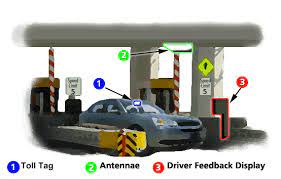RFID – How Does E-ZPass Technology Work?
RFID, or radio frequency identification, uses electromagnetic fields to transfer data from one device to another. The technology is used to track and identify cars as they move from one place to another. Cardullo was not the first to experiment with RFID, but he did file a patent for E-ZPass technology. In July 1969, he was on a plane with an IBM engineer who was trying to figure out a new way to track train cars. While on the plane, Cardullo sketched out a solution in a notebook.
Transponder
Using an E-Z Pass transponder on public transportation is one way to improve efficiency. These cards are readable by readers on highways and public streets in Manhattan, Brooklyn, and Staten Island. The data they collect help the New York Department of Transportation improve transit services. It’s important to remember that these cards cannot be used to identify individuals.
The E-ZPass system was created in an effort to relieve congestion on some of the nation’s busiest highways. It was first installed at a toll plaza in Spring Valley, New York. Within four years, the technology was installed across the state’s main highways.
E-ZPass transponders are connected to the vehicle and contain a computer chip that “talks” to antennas at designated E-ZPass lanes. When a vehicle passes through the lanes, the transponder will register its identification number and account information. This information is sent to the E-ZPass system, which communicates with a toll gate.
RFID technology uses electromagnetic fields to transmit data. The E-ZPass transponder is one of the most common examples of this technology. However, the technology is not limited to transportation. It has many applications and can be used in many other industries as well. It’s also used to track cars.
The E-ZPass system can help ease traffic congestion at toll plazas. The technology can eliminate the need for drivers to fumble for change and wait for attendants to process their payments. Additionally, fewer drivers need to stop at toll plazas, which lowers the overall cost to toll agencies. In addition, the E-ZPass system allows drivers to pass through tolls at highway speeds.
The E-ZPass transponder can be used at any state that has an E-ZPass network. While this is a laudable project, mass collection of individual vehicle trip time data without privacy protections is a concern. The New York State Department of Transportation and the New York State Thruway Authority produced vague privacy policies for these systems.
E-ZPass technology works by transmitting a signal from a transponder to an antenna in the toll lane. Once detected, the signal is transferred to a central database. The device is then able to deduct a specific amount of toll from the driver’s prepaid account. Once the driver enters a lane, the toll gate will open. A green light will indicate that the toll is valid and the driver may continue. Some lanes are also capable of sending text messages to the driver.
Toll collection
E-ZPass readers are installed on highways and streets throughout New York City. This technology helps monitor traffic and collect toll revenue. Data from these readers is shared with the New York Department of Transportation. The state is also using this technology to track vehicle speed. In a recent article published by Reason, the organization attributed 5% of all toll leakage to customer confusion. The article says that the cost of this lost revenue could be millions of dollars.
E-ZPass transponders communicate with a central database via antennas. Each time the transponder is activated, a signal from the transponder broadcasts back to the antenna. This signal contains information about the account owner. This information is then sent to the traffic management center. It is important to note that the city does not permanently store the information in the transponder.
Electronic toll collection improves traffic flow and increases traffic efficiency by reducing congestion. It also saves gas. Using this system reduces the need to install toll booths. It is easy to set up and maintain. It also reduces the need to pay staff at toll plazas and eliminates excessive vehicle idling.
MAP-21, a landmark federal act, mandated that all toll facilities should be interoperable by October 1, 2016. The toll industry has addressed this issue by balancing competing business interests and responsible public investment. It has also addressed emerging issues, such as the role of private toll account providers.
E-ZPass has proven to be a success, and is already being implemented in more than a dozen states. The system is currently the largest interoperable toll system in the world. A majority of New Jersey drivers use the system and the Turnpike Authority says that it is the most convenient way to pay for tolls.
Toll collection is the bane of long-distance auto travelers. E-ZPass reduces the hassle and cost of toll collection by making toll booths easier and faster. The technology is widely used in 13 states, and is soon to be installed on the Ohio Turnpike.
Privacy protections
Earlier this week, the NYCLU published the results of an investigation into the privacy protections of E-ZPass technology. The organization obtained records from government agencies that show how these agencies collect data on New Yorkers. The information is alarming and reveals the need for privacy protections for the EZ Pass system.
Privacy protections are important for any technology that collects personal information. While it is true that traffic management is a top priority, users should be aware of the fact that their information is being collected by the government. Moreover, any government agency must inform the public about data collection before using E-ZPass technology.
